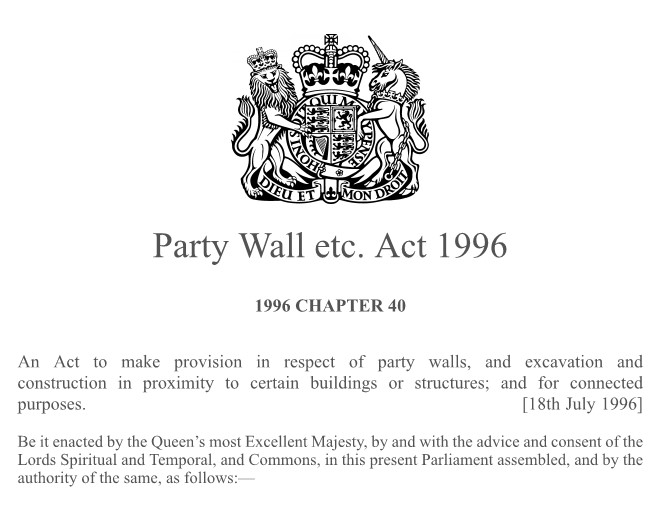
As cities become more densely populated and land values increase, refurbishments and developments often need to extend to the boundary to maximise their value.
If your development is located in close proximity to a party wall, or looks to utilise an existing party wall for support, there are three critical items that will need careful consideration.
- Structural capacity of the wall
- Ownership & access requirements
- The Party Wall Act.
All these items can affect the feasibility of the project, as well as influence the strategy of the approach to adopt the path of least resistance while still complying with the laws and regulations.
Structural Capacity
Using an existing wall to support a new structure is logically the most straightforward way to maximise space while also reducing the amount of new materials required. As much as it may seem like the most efficient option, you must be absolutely confident that the wall has sufficient capacity so that the additional loads don’t compromise its structural integrity. This applies both to the capacity of the wall itself, as well as its foundations. Depending on the project, we would recommend carrying out a number of masonry strength tests and trial pits to ascertain the acceptable limit of additional loading. These results will provide the confidence required to mitigate any risks of using the existing wall, or inform the need for alternative solutions.
Ownership & Access Requirements
Once the scope of work is clear, it will then be important to understand who the owners of the neighbouring properties are and if access to their property is required to carry out the works. This can include setting up scaffolding on the adjoining land to facilitate the installation of structure and delivery of materials, or the ability to finish and make-good a boundary wall. We recommend that a
search on Land Registry is carried out to identify the adjoining owners. Party walls can have multiple owners, and they all have influence over access rights which may need to be negotiated. If the works trigger the Party Wall Act, then the Building Owner in most cases has automatic access rights to the neighbouring properties providing the correct Notices are served.
The Party Wall Act.
With regards to the Party Wall Act. as the Building Owner, you want to ensure that you adhere to your legal responsibilities as defined by The Act. This starts by making sure that Notices are served on all adjoining owners, which include Freeholders, Leaseholders, and certain tenants. By serving notice, you gain various rights, such as access to neighbouring land, as well as the ability to enclose upon a party structure. If the required notices are not served, then there is a risk that the adjoining owners can seek an injunction to stop the works. As the party wall matters can be actioned in parallel with the planning process, we always recommend the party wall process should start as soon as practically possible to minimise the impact of potential delays. Items that trigger the Party Wall Act include cutting away at a wall; cutting into a wall; inserting fixings into a wall; building/extending along the boundary line; and
excavations within close proximity to any neighbouring structure. A Party Wall Surveyor’s role will also
involve condition surveys; liaising with other surveyors; preparing an Award & security for expenses.
George Ramsay CEng MICE MFPWS, Director
Geared Consulting Partnerships – Chartered Structural & Civil Engineers l Party Wall Surveyors

Comments